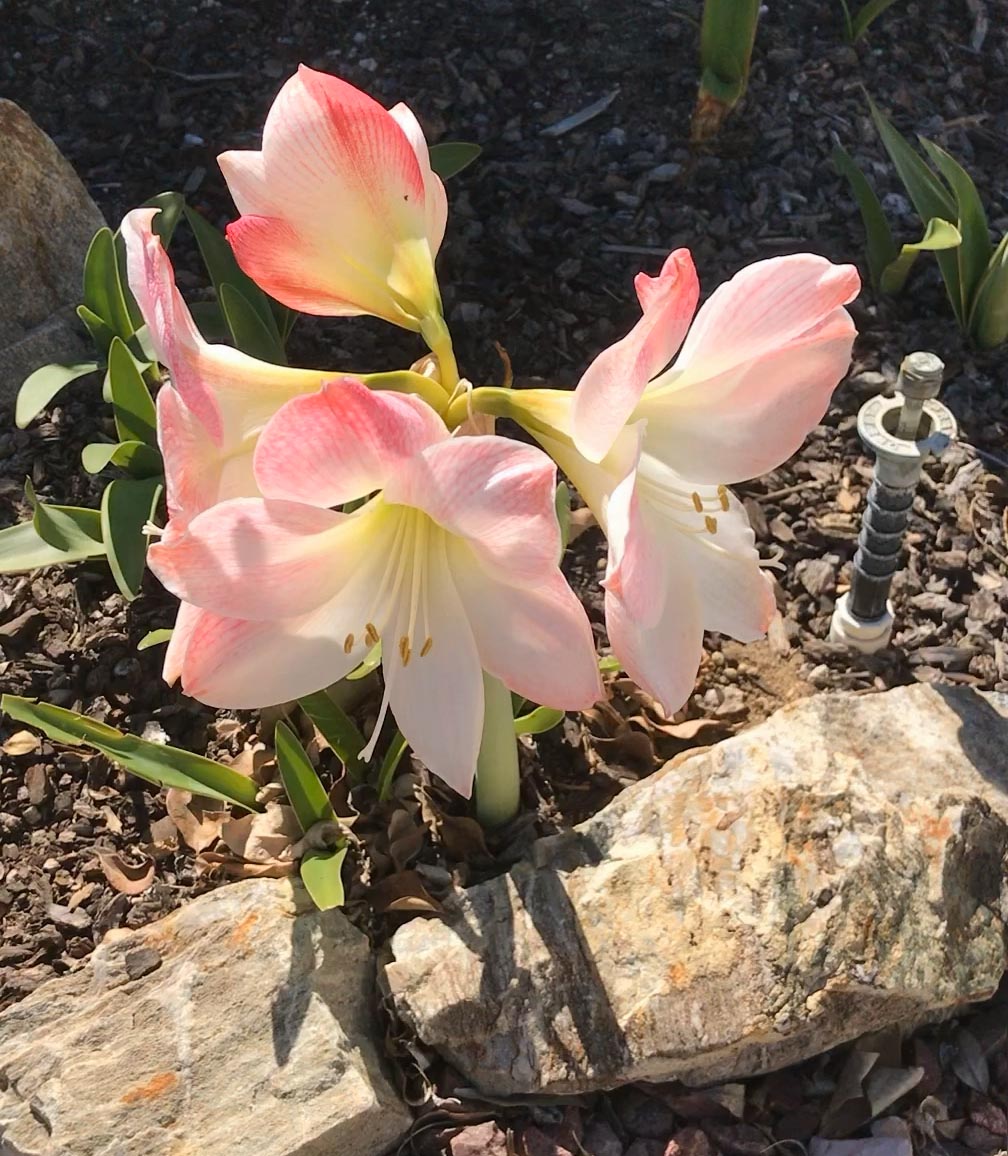There are only two known species of plant with its beautiful flowers. The plant is native to the western Cape region of South Africa, in the rocky area betwwen the Oligants River and Knysna. Amaryllis has been introduced into California (see images below), Great Britain, Australia, and New Zealand.
Its classification is:
Kingdom Plantae
Order Asparagales
Family Amaryllidacea
Genus Amaryllis Linnaeus, 1753
Species: only two species are known.
The common names of this plant are “belladonna lily,” “Jersey lily,” “armarillo,” “Easter lily” (in southern Australia), and the “March lily” (in South Africa). These plants, however, are only distantly related to the true lily, Lilium.
The name “Amaryllis” symbolizes “love, beauty, and determination.” The plant is up to 3 feet tall, with long leaves. Its flowers are large and funnel shape, and have long stems. The flowers can be white, pink, apricot, rose, or deep burgundy. The images shown below are from plants grown in my garden in northern Los Angels County, Southern California.
This plant normally flowers in late summer. It is NOT frost tolerant, but it does not like tropical environments. It likes considerable shade (but not total shade) and does not like to “sit” in water. It does well is the Los Angeles area.
While researching this flower, I was surprised to learn that the genus name “Amaryllis” is used also for a group of marine crustaceans (amphipods) that live in shallow oceans (depth from shoreline to 50 m) in the western Indian Ocean! This is allowed in the long-standing rules of taxonomy (= the naming of organisms) because the name “Amaryllis” applies to both plants and marine animals; otherwise, one name or the other would have to be changed.
Reference consulted: Wikipedia














